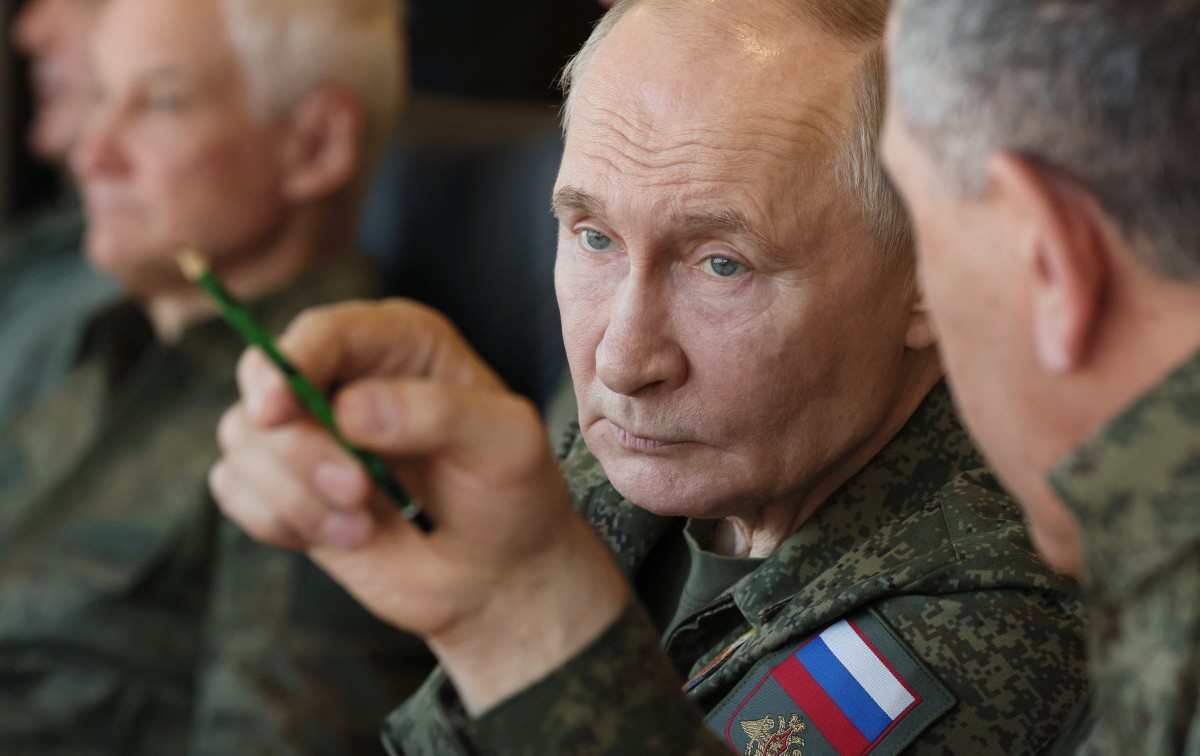Since the beginning of the Ukraine War in February 2022, the European Union (EU) has had powerful leverage against Russia – Moscow’s roughly USD 300 billion foreign exchange reserves invested in Western financial institutions.
These Russian assets were frozen as soon as the Russian invasion began. The EU wanted to utilise these funds as an economic toolkit designed to strengthen Ukraine and diminish Russia’s war-making capacity.
Since then, there have been repeated calls for transferring this money to Ukraine, so that Kyiv can fund its war effort.
Though the EU has so far resisted calls for outrightly confiscating these assets and transferring them to Ukraine, the demand has found many new supporters during the last month, rattling Russia.
Legal and financial experts have warned that confiscating this money is beset with a host of legal, geopolitical, and practical constraints; however, multiple media reports claim that the EU might have found a legally complex way around this complicated problem.
The Current Status Of Russia’s Billions
The Russian Elites, Proxies, and Oligarchs (REPO) Task Force—comprising the Group of Seven (G7), the European Union (EU), and Australia — recently estimated the value of frozen Russian assets at around USD 280 billion.
The Central Bank of Russia estimated the figure to be between US$300 billion and US$330 billion.
According to the Brookings Institution, Euroclear, a Belgian central securities depository, managed approximately US$200 billion of those assets on behalf of the Central Bank of Russia.
Euroclear manages approximately 90% of the frozen reserves in the EU, while France holds the majority of the remaining reserves. The U.S. has around US$5 billion.
Initially, EU leaders sought a way to utilize this money without confiscating it, a move that the EU believed carried too many financial, legal, and geopolitical risks.
To immobilize or freeze the money, the EU imposed sanctions, forbidding Euroclear from repaying Russia. However, calls for outright confiscation were resisted.
In April 2024, President Biden signed the Rebuilding Economic Prosperity and Opportunity for Ukrainians Act (REPO Act), which authorized seizure in the U.S. contingent upon G7 cooperation; however, the Biden administration did not exercise this authority.
So far, the EU has only transferred to Ukraine the interest earned on these funds, also known as “extraordinary revenue.”
In July 2024, Euroclear made its first payment of USD 2 billion to Ukraine from the interest earned on these funds.
Another similarly sized payment was made to Ukraine by Euroclear in March 2025.
During the June 2024 G7 summit, the member countries also agreed on the Extraordinary Revenue Acceleration (ERA) loan plan. Under this scheme, the G7 and the EU collectively lent US$50 billion to Ukraine, which will be repaid with the interest earned on frozen Russian assets.
However, all these measures fall short of Ukraine’s massive needs and are negligible when compared to the entire amount of frozen Russian assets, which amounts to nearly US$300 billion.
According to Timothy Ash, an associate fellow in the Russia and Eurasia programme at Chatham House, the provision of US$330 billion of CBR assets for Ukraine would be a game-changer.
“It would assure Ukraine’s financing for two to three years to come and enable Ukraine to buy the full range of Western conventional military kit to enable it to defend itself and win the war.”
“It would raise the stakes for Moscow – is Moscow actually prepared to continue this war for another 2-3 years and match Ukraine dollar for dollar, actually $330 billion of Russia’s own money?” Timothy writes in his Substack on October 2.
The funds constitute nearly half of the Russian Central Bank’s gold and foreign-exchange reserves.
Understandably, Moscow is rattled at the prospect of Ukraine getting US$330 billion of its frozen assets.
Russia Warns: ‘Confiscation Is Theft’
Earlier this week, Russia warned that it would seek the prosecution of individuals and countries engaged in the “theft” of frozen Russian sovereign assets in Europe.
The Kremlin spokesman, Dmitri S. Peskov, made no distinction between stealing the frozen Russian assets and using them to extend a loan to Ukraine without seizing them, as top European leaders have proposed.
Meanwhile, Russia is also threatening that if the EU steals its frozen assets, then Moscow would respond by confiscating Western assets in Russia.
Notably, Anton G. Siluanov, the Russian Finance Minister, stated last year that his country had frozen an amount of Western assets equivalent to the Russian assets frozen by the West.
However, according to Timothy Ash, the total value of Western assets in Russia is less than one-tenth the value of Russian assets frozen by the West. Furthermore, he writes that Russia has already frozen most of these assets. Thus, Western countries have nothing to fear.
Russia’s fears are growing as the EU has come up with a complicated legal solution to use Russian funds for Ukraine, without seizing them outright.

EU’s New Plan To Use Frozen Russian Funds
According to The New York Times, the EU is working on a proposal to issue an interest-free “reparations loan” of 140 billion euros, or approximately $165 billion, to Ukraine, designed to utilize Russian assets without seizing them outright.
The loan would only be repaid by Ukraine if it receives war reparations from Russia in a peace agreement, effectively allowing Ukraine to spend the money now, rather than wait until Moscow pays up.
“We need a more structural solution for military support. This is why I have put forward the idea of a reparations loan that is based on the immobilized Russian assets,” the European Commission’s president, Ursula von der Leyen, said.
The idea has gained traction due to multiple factors. On the one side, the talks on the Ukraine peace deal have stalled, and Moscow has increased the intensity of its attacks on Ukraine.
Separately, Trump has made it clear that he will not pay the bill for the Ukraine war effort, and Europe must step up. At the same time, European countries are facing domestic protests for using taxpayers’ money to fund the Ukraine War.
Utilizing frozen Russian assets offers a straightforward solution to these problems. Since the plan of “reparations loan” does not involve outright confiscation, there won’t be serious legal or financial ramifications.
According to this plan, the EU will give frozen Russian assets to Ukraine as a “reparation loan.” However, Kyiv will have to return this money only when Moscow compensates it for war damages.
However, if the Kremlin does not agree to war reparations, then how does Euroclear recover its money to maintain its balance sheet integrity?
According to a report in the Wall Street Journal, Euroclear’s assets must equal its liabilities.
In this case, Euroclear’s liability is its contractual obligation to pay back Russia. However, due to the EU sanctions, Euroclear can not and will not have to pay back Moscow.
The EU would provide Euroclear with a legal promise, an IOU, to repay Euroclear if needed. The EU, in return, would get guarantees from member states to fund the money if the EU needed to repay.
As more EU members sign the IOUs, the risk for each member declines.
According to the WSJ, EU members will not be forced to join the scheme, so that countries like Hungary and Slovakia, two EU countries with close ties to Russia, cannot veto the plan.
Under this plan, Euroclear’s assets (IOUs issued by EU member states) and liabilities (contractual obligations to pay Russia) match as long as sanctions are imposed on Russia and Euroclear does not have to repay Russia.
Sanctions will stay in place unless Russia agrees to pay war reparations. If Russia agrees to war reparations, then Ukraine can repay the “reparation loan” from the money it receives from Moscow.
Hypothetically, the scheme looks sound; however, Euroclear has raised concerns. Any such move by the EU will send a global signal.
“There’s no free money — there are always consequences,” Belgian Prime Minister Bart De Wever has warned, as he urged fellow EU leaders to provide written guarantees that they would share the risks involved in using frozen Russian assets to finance loans to Ukraine.
Many countries of the Global South, such as China, Saudi Arabia, the UAE, Qatar, and India, have invested huge sums in Western financial institutions.
Any signal that these sovereign funds can be seized, directly or indirectly, will create a panic run, forcing these countries to recalibrate their investments with Western financial institutions.
Thus, any such move by the EU can lead to de-dollarization and weakening of the Euro as a global currency.
Furthermore, groupings like BRICS can develop their own payment methods.
The EU must tread carefully.




